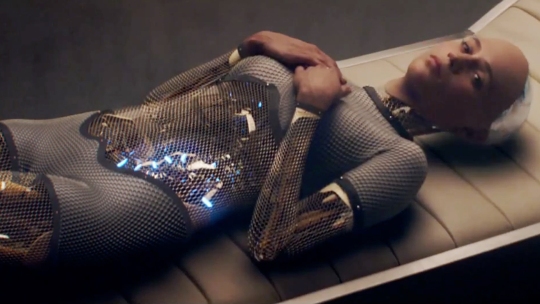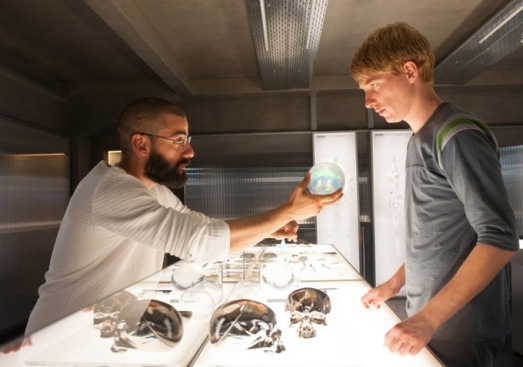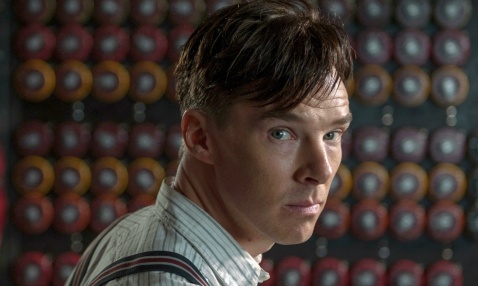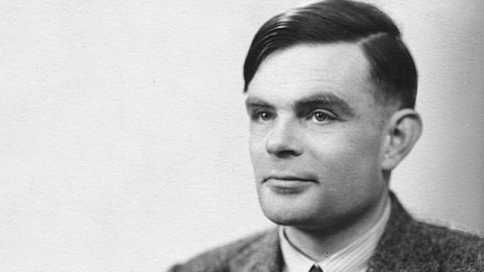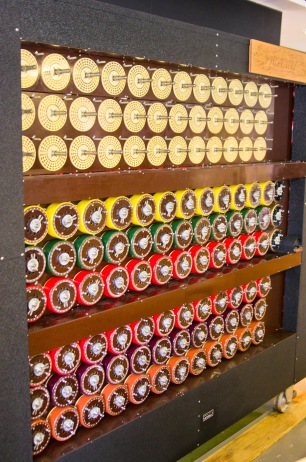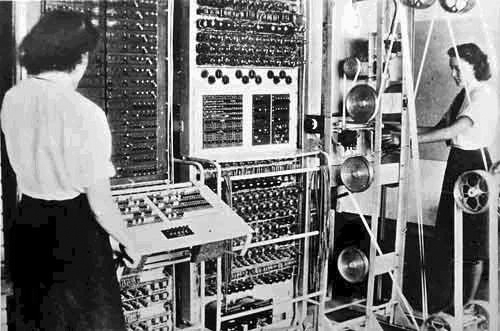IT’S a rare thing to see a movie about science that takes no prisoners intellectually. Alex Garland’s Ex Machina is just that: a stylish, spare and cerebral psycho-techno-thriller, which gives a much-needed shot in the arm for smart science fiction.
Reclusive billionaire genius Nathan, played by Oscar Isaac, creates Ava, an intelligent and very attractive robot played by Alicia Vikander. He then struggles with the philosophical and ethical dilemmas his creation poses, while all hell breaks loose. Many twists and turns add nuance to the plot, which centres on the evolving relationships between the balletic Ava and Caleb (Domhnall Gleeson), a hotshot programmer invited by Nathan to be the “human component in a Turing test”, and between Caleb and Nathan, as Ava’s extraordinary capabilities become increasingly apparent
Everything about this movie is good. Compelling acting (with only three speaking parts), exquisite photography and set design, immaculate special effects, a subtle score and, above all, a hugely imaginative screenplay combine under Garland’s precise direction to deliver a cinematic experience that grabs you and never lets go.
The best science fiction often tackles the oldest questions. At the heart of Ex Machina is one of our toughest intellectual knots, that of artificial consciousness. Is it possible to build a machine that is not only intelligent but also sentient: that has consciousness, not only of the world but also of its own self? Can we construct a modern-day Golem, that lumpen being of Jewish folklore which is shaped from unformed matter and can both serve humankind and turn against it? And if we could, what would happen to us?
Putting aside the tedious business of actually building a conscious AI, we face the challenge of figuring out whether the attempt succeeds. The standard reference for this sort of question is Alan Turing’s eponymous test, in which a human judge interrogates both a candidate machine and another human. A machine passes the test when the judge consistently fails to distinguish between them.
While the Turing test has provided a trope for many AI-inspired movies (such as Spike Jonze’s excellent Her), Ex Machina takes things much further. In a sparkling exchange between Caleb and Nathan, Garland nails the weakness of Turing’s version of the test, a focus on the disembodied exchange of messages, and proposes something far more interesting. “The challenge is to show you that she’s a robot. And see if you still feel she has consciousness,” Nathan says to Caleb.
This shifts the goalposts in a vital way. What matters is not whether Ava is a machine. It is not even whether Ava, even though a machine, can be conscious. What matters is whether Ava makes a conscious person feel that Ava is conscious. The brilliance of Ex Machina is that it reveals the Turing test for what it really is: a test of the human, not of the machine. And Garland is not necessarily on our side.
Is consciousness a matter of social consensus? Is it more relevant whether people believe (or feel) that something (or someone) is conscious than whether it is in fact actually conscious? Or, does something being “actually conscious” rest on other people’s beliefs about it being conscious, or on its own beliefs about its consciousness (beliefs that may themselves depend on how it interprets others’ beliefs about it)? And exactly what is the difference between believing and feeling in situations like this?
It seems to me that my consciousness, here and now, is not a matter of social consensus or of my simply believing or feeling that I am conscious. It seems to me, simply, that I am conscious here and now. When I wake up and smell the coffee, there is a real experience of coffee-smelling going on.
But let me channel Ludwig Wittgenstein, one of the greatest philosophers of the 20th century, for a moment. What would it seem like if it seemed to me that my being conscious were a matter of social consensus or beliefs or feelings about my own conscious status? Is what it “seems like” to me relevant at all when deciding how consciousness comes about or what has consciousness?
Before vanishing completely into a philosophical rabbit hole, it is worth saying that questions like these are driving much influential current research on consciousness. Philosophers and scientists like Daniel Dennett, David Rosenthal and Michael Graziano defend, in various ways, the idea that consciousness is somehow illusory and what we really mean in saying we are conscious is that we have certain beliefs about mental states, that these states have distinctive functional properties, or that they are involved in specific sorts of attention.
Another theoretical approach accepts that conscious experience is real and sees the problem as one of determining its physical or biological mechanism. Some leading neuroscientists such as Giulio Tononi, and recently, Christof Koch, take consciousness to be a fundamental property, much like mass-energy and electrical charge, that is expressed through localised concentrations of “integrated information”. And others, like philosopher John Searle, believe that consciousness is an essentially biological property that emerges in some systems but not in others, for reasons as-yet unknown.
In the film we hear about Searle’s Chinese Room thought experiment. His premise was that researchers had managed to build a computer programmed in English that can respond to written Chinese with written Chinese so convincingly it easily passes the Turing test, persuading a human Chinese speaker that the program understands and speaks Chinese. Does the machine really “understand” Chinese (Searle called this “strong AI”) or is it only simulating the ability (“weak” AI)? There is also a nod to the notional “Mary”, the scientist, who, while knowing everything about the physics and biology of colour vision, has only ever experienced black, white and shades of grey. What happens when she sees a red object for the first time? Will she learn anything new? Does consciousness exceed the realms of knowledge.
All of the above illustrates how academically savvy and intellectually provocative Ex Machina is. Hat-tips here to Murray Shanahan, professor of cognitive robotics at Imperial College London, and writer and geneticist Adam Rutherford, whom Garland did well to enlist as science advisers.
Not every scene invites deep philosophy of mind, with the film encompassing everything from ethics, the technological singularity, Ghostbusters and social media to the erosion of privacy, feminism and sexual politics within its subtle scope. But when it comes to riffing on the possibilities and mysteries of brain, mind and consciousness, Ex Machina doesn’t miss a trick.
As a scientist, it is easy to moan when films don’t stack up against reality, but there is usually little to be gained from nitpicking over inaccuracies and narrative inventions. Such criticisms can seem petty and reinforcing of the stereotype of scientists as humourless gatekeepers of facts and hoarders of equations. But these complaints sometimes express a sense of missed opportunity rather than injustice, a sense that intellectual riches could have been exploited, not sidelined, in making a good movie. AI, neuroscience and consciousness are among the most vibrant and fascinating areas of contemporary science, and what we are discovering far outstrips anything that could be imagined out of thin air.
In his directorial debut, Garland has managed to capture the thrill of this adventure in a film that is effortlessly enthralling, whatever your background. This is why, on emerging from it, I felt lucky to be a neuroscientist. Here is a film that is a better film, because of and not despite its engagement with its intellectual inspiration.
The original version of this piece was published as a Culture Lab article in New Scientist on Jan 21. I am grateful to the New Scientist for permission to reproduce it here, and to Liz Else for help with editing. I will be discussing Ex Machina with Dr. Adam Rutherford at a special screening of the film at the Edinburgh Science Festival (April 16, details and tickets here).

